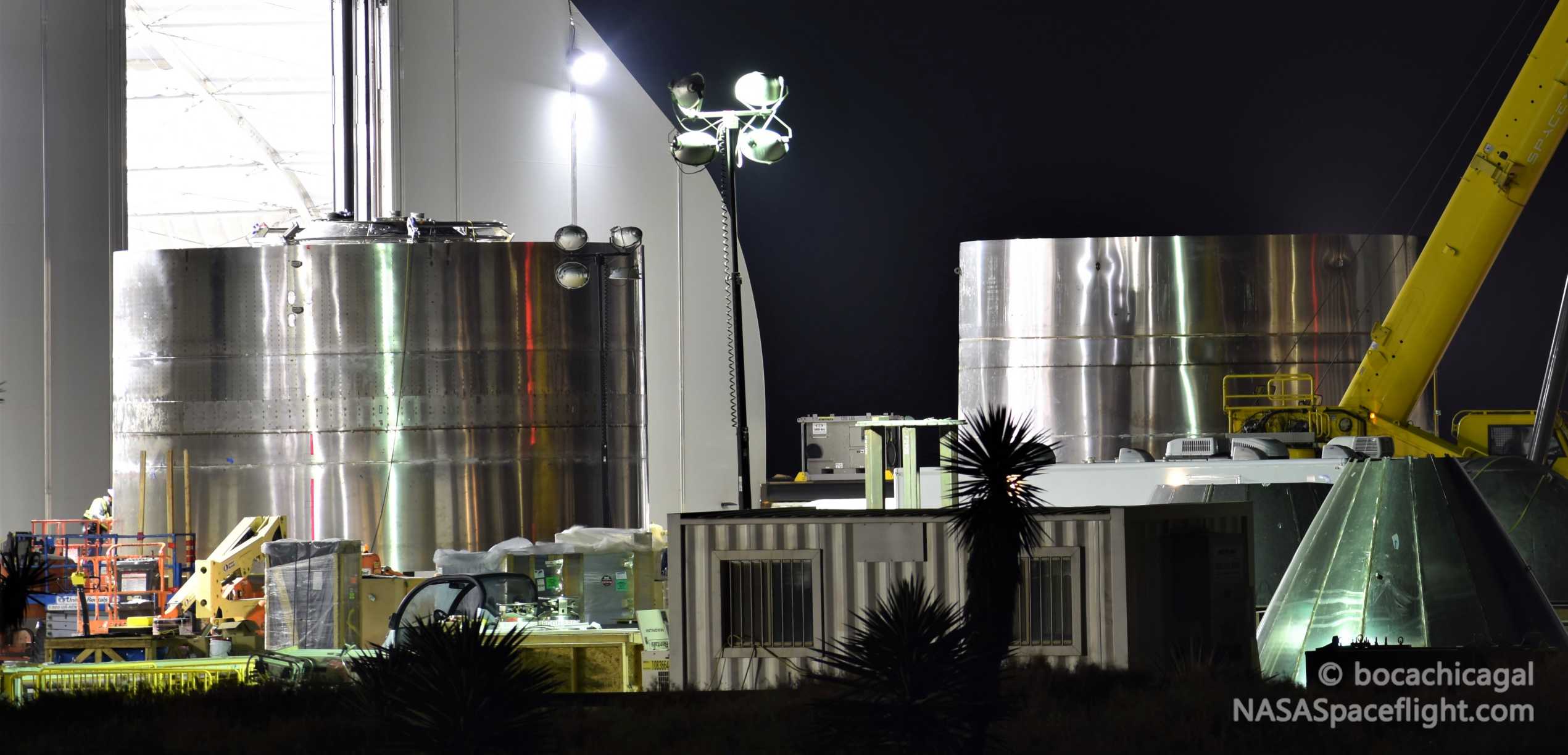

News
SpaceX Starship prototype speeding towards launch pad for first Raptor engine tests
SpaceX continues to build full-scale Starship hardware at a jaw-dropping pace, testing the limits of rocket production to complete the fifth full-scale prototype in three months and prepare the ship for its first Raptor engine ignition tests.
This time around, SpaceX CEO Elon Musk is fairly confident that the latest Starship prototype – known as serial number 3 (SN3) – has the best chance yet of becoming the first full-scale ship to pass acceptance tests and kick off a Raptor engine static fire campaign. A step further, if said static fires go according to plan, Starship SN3 could become the first full-scale vehicle of its kind to perform controlled flight tests.
Starship SN3 will thus attempt to follow in the footsteps of Starhopper and hopefully avoid an unintentional launch debut similar to the one that destroyed Starship SN1 earlier this month. A successful Starship flight test powered by three Raptor engines would be a major bode of confidence in the upgraded rocket factory SpaceX is building in South Texas. Musk recently made it clear that setting up the machine that builds the machine is currently just as important as individual Starship tests. Thankfully, given that SpaceX is already managing to build colossal rocket prototypes in a matter of weeks for what has to be pennies on the dollar, all with a team of just a few hundred people, the next Starship test campaign is likely just a week or two away.
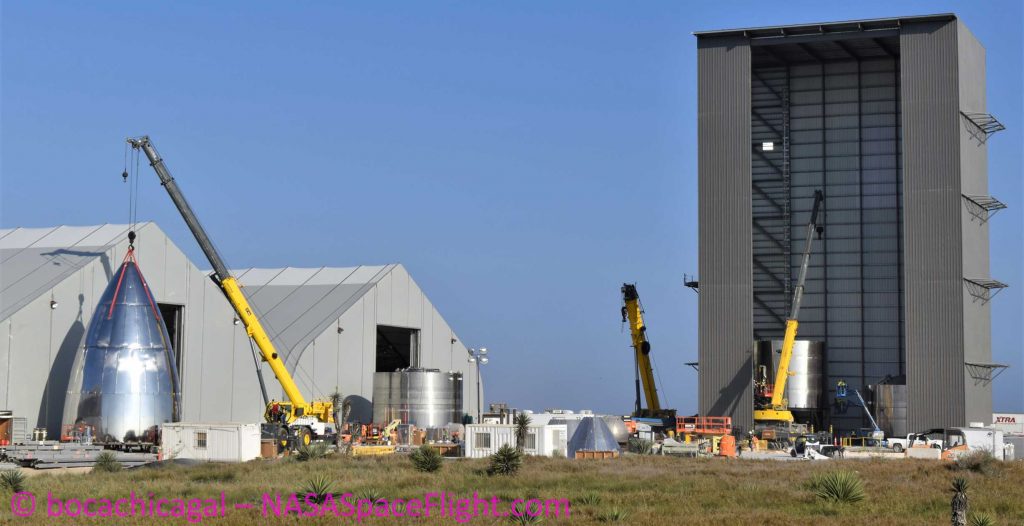
On March 9th, Musk revealed that the Starship SN2 prototype – an incomplete tank repurposed for specific testing – had passed a proof test with flying colors. SN2’s brief test campaign managed to prove that SpaceX had already fixed the weak point believed to have destroyed Starship SN1 less than two weeks prior. Featuring a redesigned engine section and thrust structure (or “thrust puck,” per Musk), the Starship SN2 test tank survived pressure testing and even made it through engine thrust simulations with the help of an industrial-scale hydraulic jack.
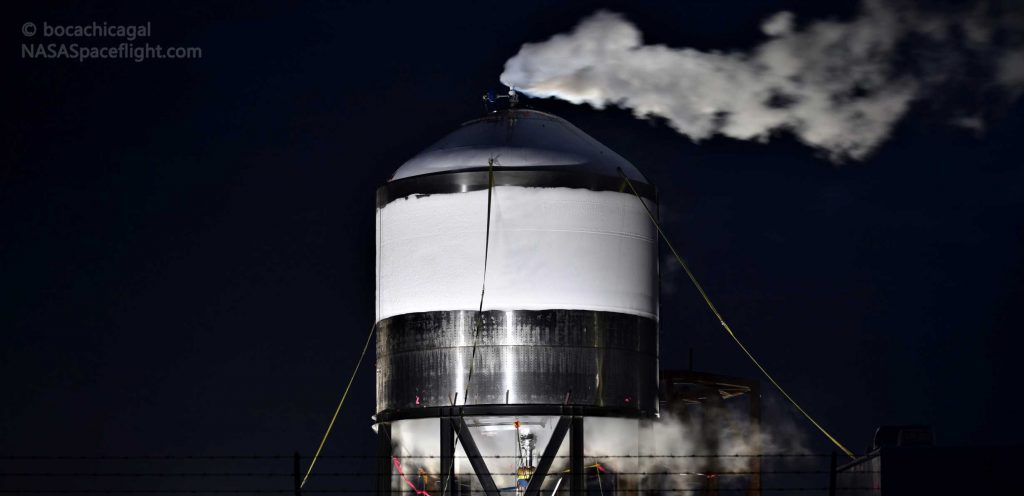
While the tank passed its tests looking no worse for wear, the last-second design changes SpaceX had to make to rapidly perform thrust structure verification testing made it impossible to repurpose for any alternative use. Starship SN2 has thus been relegated to the scrapyard, a technical necessity but also a sign of both the program’s high rate of progress and low prototype cost. SpaceX’s Boca Chica factory has already more or less completed a new engine section for Starship SN3 and is probably just a day or two away from integrating it with the rest of the steel vehicle.
Less than three days after SpaceX’s brand new vehicle assembly building (VAB) had a single, small Starship section sat inside it, two additional sections of Starship SN3’s tank section departed their fabrication tents and were stacked on March 18th. Less than a day later, the third segment of the rocket’s tank section capped off the two that were stacked the day before. Once those three stacked sections are fully welded together to form a single, cohesive piece of steel, it will need to be stacked atop the aft tank dome and thrust structure to effectively complete Starship SN3’s tank section.
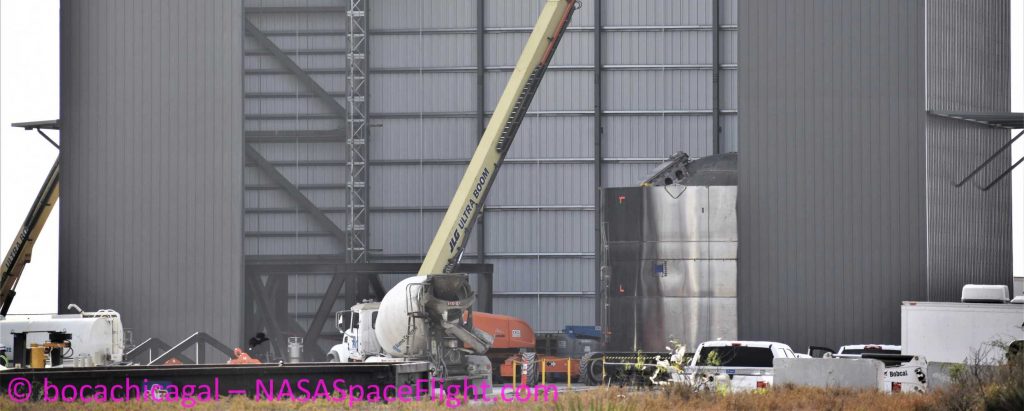
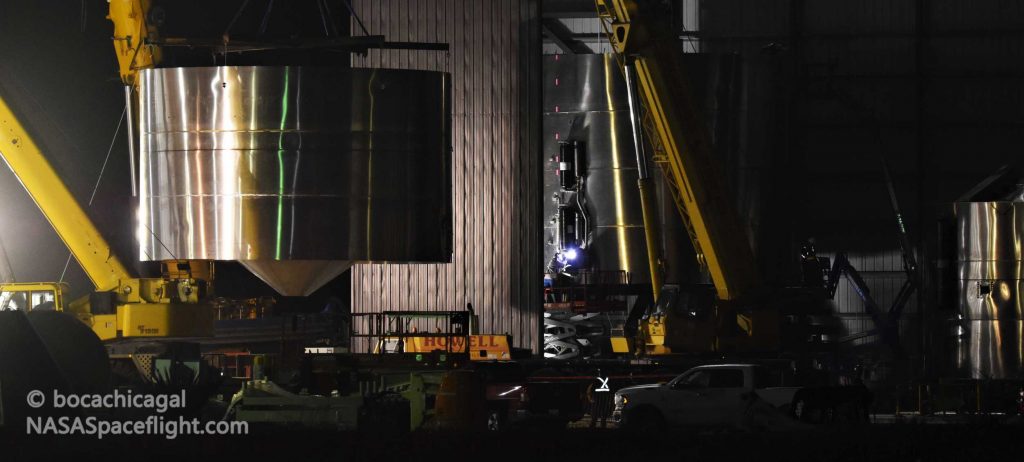
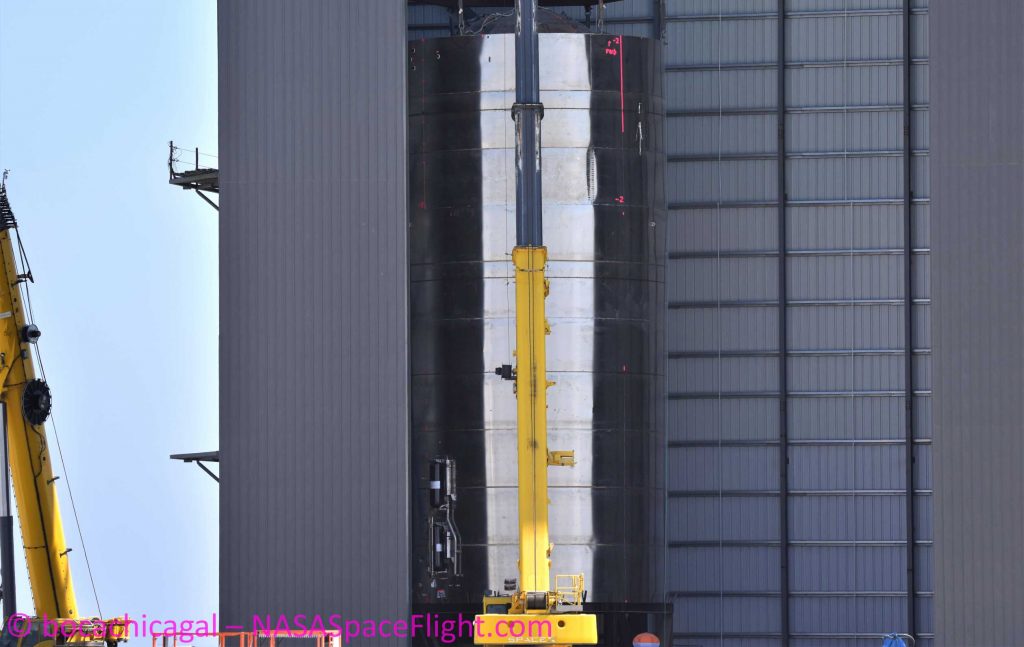
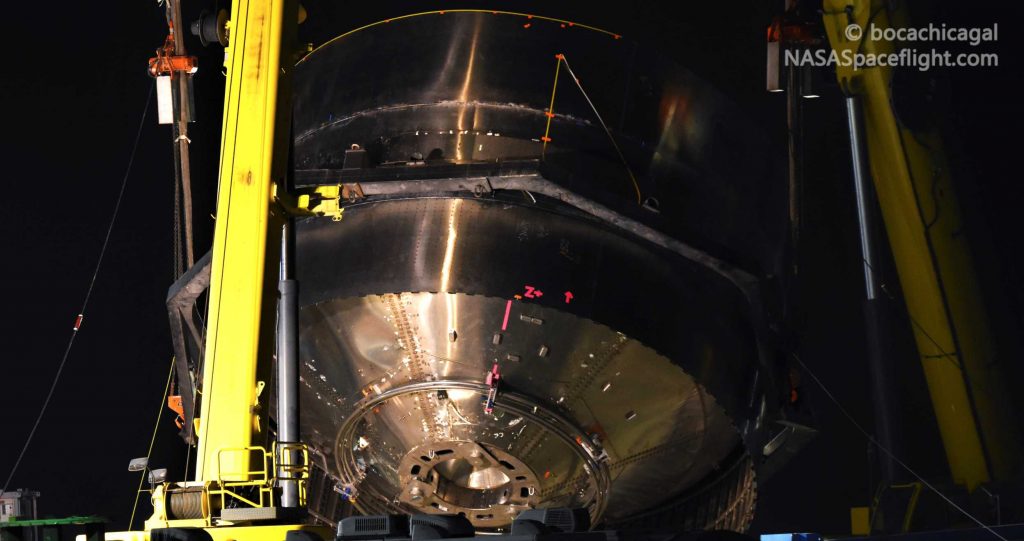
After all four sections are joined, technicians will need to install a few internal parts, but most remaining work mainly involves running wiring and plumbing for power, communications, propellant management, and pressurization. More likely than not, SpaceX replicate its Starship Mk1 and SN1 testing strategy and bring Starship SN3’s tank section to the launch pad for proof testing as soon as outfitting is complete. If the rocket passes proof testing, SpaceX can – for the first time – install functional Raptor engines on a full-scale Starship prototype and begin a crucial wet dress rehearsal (WDR) and static fire test campaign.
At the current rate of progress, SpaceX could easily be ready to transport Starship SN3 to the pad within the next week, give or take. Stay tuned for updates as the company works to quickly finish SN3 integration and move onto the testing phase.
Check out Teslarati’s Marketplace! We offer Tesla accessories, including for the Tesla Cybertruck and Tesla Model 3.
News
Tesla UK sales see 14% year-over-year rebound in June: SMMT data
The SMMT stated that Tesla sales grew 14% year-over-year to 7,719 units in June 2025.

Tesla’s sales in the United Kingdom rose in June, climbing 14% year-over-year to 7,719 units, as per data from the Society of Motor Manufacturers and Traders (SMMT). The spike in the company’s sales coincided with the first deliveries of the updated Model Y last month.
Model Y deliveries support Tesla’s UK recovery
Tesla’s June performance marked one of its strongest months in the UK so far this year, with new Model Y deliveries contributing significantly to the company’s momentum.
While the SMMT listed Tesla with 7,719 deliveries in June, independent data from New AutoMotive suggested that the electric vehicle maker registered 7,891 units during the month instead. However, year-to-date figures for Tesla remain 2% down compared to 2024, as per a report from Reuters.
While Tesla made a strong showing in June, rivals are also growing. Chinese automaker BYD saw UK sales rise nearly fourfold to 2,498 units, while Ford posted the highest EV growth among major automakers, with a more than fourfold increase in the first half of 2025.
Overall, the UK’s battery electric vehicle (BEV) demand surged 39% to to 47,354 units last month, helping push total new car sales in the UK to 191,316 units, up 6.7% from the same period in 2024.
EV adoption accelerates, but concerns linger
June marked the best month for UK car sales since 2019, though the SMMT cautioned that growth in the electric vehicle sector remains heavily dependent on discounting and support programs. Still, one in four new vehicle buyers in June chose a battery electric vehicle.
SMMT Chief Executive Mike Hawes noted that despite strong BEV demand, sales levels are still below regulatory targets. “Further growth in sales, and the sector will rely on increased and improved charging facilities to boost mainstream electric vehicle adoption,” Hawes stated.
Also taking effect this week was a new US-UK trade deal, which lowers tariffs on UK car exports to the United States from 27.5% to 10%. The agreement could benefit UK-based EV producers aiming to expand across the country.
News
Tesla Model 3 ranks as the safest new car in Europe for 2025, per Euro NCAP tests
Despite being on the market longer than many of its rivals, the Tesla Model 3 continues to set the bar for vehicle safety.

The Tesla Model 3 has been named the safest new car on sale in 2025, according to the latest results from the Euro NCAP. Among 20 newly tested vehicles, the Model 3 emerged at the top of the list, scoring an impressive 359 out of 400 possible points across all major safety categories.
Tesla Model 3’s safety systems
Despite being on the market longer than many of its rivals, the Tesla Model 3 continues to set the bar for vehicle safety. Under Euro NCAP’s stricter 2025 testing protocols, the electric sedan earned 90% for adult occupant protection, 93% for child occupant protection, 89% for pedestrian protection, and 87% for its Safety Assist systems.
The updated Model 3 received particular praise for its advanced driver assistance features, including Tesla’s autonomous emergency braking (AEB) system, which performed well across various test scenarios. Its Intelligent Speed Assistance and child presence detection system were cited as noteworthy features as well, as per a WhatCar report.
Other notable safety features include the Model 3’s pedestrian-friendly pop-up hood and robust crash protection for both front and side collisions. Euro NCAP also highlighted the Model 3’s ability to detect vulnerable road users during complex maneuvers, such as turning across oncoming traffic.
Euro NCAP’s Autopilot caution
While the Model 3’s safety scores were impressive across the board, Euro NCAP did raise concerns about driver expectations of Tesla’s Autopilot system. The organization warned that some owners may overestimate the system’s capabilities, potentially leading to misuse or inattention behind the wheel. Even so, the Model 3 remained the highest-scoring vehicle tested under Euro NCAP’s updated criteria this year.
The Euro NCAP’s concerns are also quite interesting because Tesla’s Full Self-Driving (FSD) Supervised, which is arguably the company’s most robust safety suite, is not allowed for public rollout in Europe yet. FSD Supervised would allow the Model 3 to navigate inner city streets with only minimal human supervision.
Other top scorers included the Volkswagen ID.7, Polestar 3, and Geely EX5, but none matched the Model 3’s total score or consistency across categories. A total of 14 out of 20 newly tested cars earned five stars, while several models, including the Kia EV3, MG ZS, and Renault 5, fell short of the top rating.
Elon Musk
Why Tesla’s Q3 could be one of its biggest quarters in history
Tesla could stand to benefit from the removal of the $7,500 EV tax credit at the end of Q3.

Tesla has gotten off to a slow start in 2025, as the first half of the year has not been one to remember from a delivery perspective.
However, Q3 could end up being one of the best the company has had in history, with the United States potentially being a major contributor to what might reverse a slow start to the year.
Earlier today, the United States’ House of Representatives officially passed President Trump’s “Big Beautiful Bill,” after it made its way through the Senate earlier this week. The bill will head to President Trump, as he looks to sign it before his July 4 deadline.
The Bill will effectively bring closure to the $7,500 EV tax credit, which will end on September 30, 2025. This means, over the next three months in the United States, those who are looking to buy an EV will have their last chance to take advantage of the credit. EVs will then be, for most people, $7,500 more expensive, in essence.
The tax credit is available to any single filer who makes under $150,000 per year, $225,000 a year to a head of household, and $300,000 to couples filing jointly.
Ending the tax credit was expected with the Trump administration, as his policies have leaned significantly toward reliance on fossil fuels, ending what he calls an “EV mandate.” He has used this phrase several times in disagreements with Tesla CEO Elon Musk.
Nevertheless, those who have been on the fence about buying a Tesla, or any EV, for that matter, will have some decisions to make in the next three months. While all companies will stand to benefit from this time crunch, Tesla could be the true winner because of its sheer volume.
If things are done correctly, meaning if Tesla can also offer incentives like 0% APR, special pricing on leasing or financing, or other advantages (like free Red, White, and Blue for a short period of time in celebration of Independence Day), it could see some real volume in sales this quarter.
You can now buy a Tesla in Red, White, and Blue for free until July 14 https://t.co/iAwhaRFOH0
— TESLARATI (@Teslarati) July 3, 2025
Tesla is just a shade under 721,000 deliveries for the year, so it’s on pace for roughly 1.4 million for 2025. This would be a decrease from the 1.8 million cars it delivered in each of the last two years. Traditionally, the second half of the year has produced Tesla’s strongest quarters. Its top three quarters in terms of deliveries are Q4 2024 with 495,570 vehicles, Q4 2023 with 484,507 vehicles, and Q3 2024 with 462,890 vehicles.
-

 Elon Musk5 days ago
Elon Musk5 days agoTesla investors will be shocked by Jim Cramer’s latest assessment
-

 News1 week ago
News1 week agoTesla Robotaxi’s biggest challenge seems to be this one thing
-

 Elon Musk2 weeks ago
Elon Musk2 weeks agoFirst Look at Tesla’s Robotaxi App: features, design, and more
-

 News2 weeks ago
News2 weeks agoWatch Tesla’s first driverless public Robotaxi rides in Texas
-

 News2 weeks ago
News2 weeks agoSpaceX and Elon Musk share insights on Starship Ship 36’s RUD
-

 News1 week ago
News1 week agoWatch the first true Tesla Robotaxi intervention by safety monitor
-

 News2 weeks ago
News2 weeks agoTesla has started rolling out initial round of Robotaxi invites
-

 Elon Musk2 weeks ago
Elon Musk2 weeks agoTesla to launch in India in July with vehicles already arriving: report


















